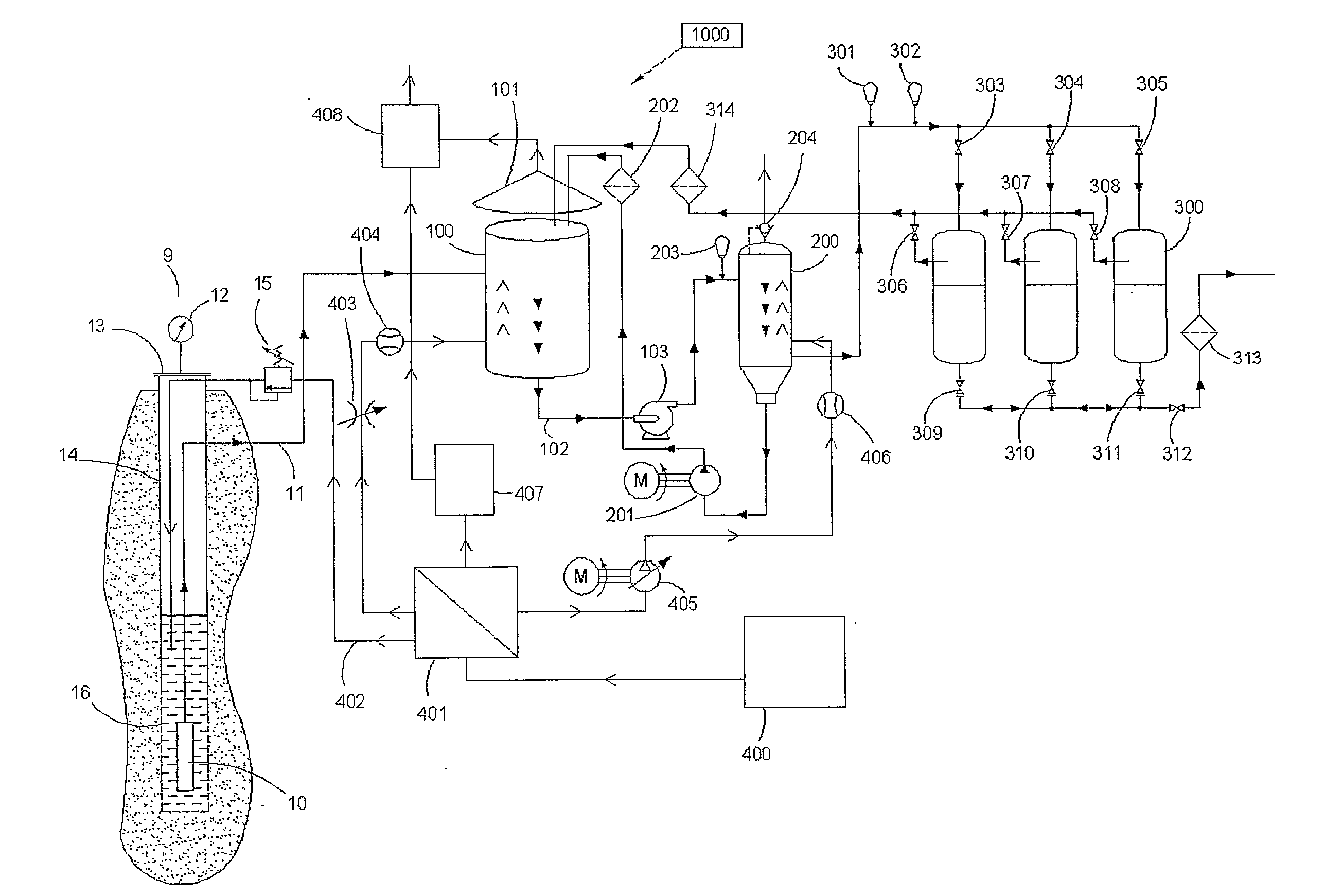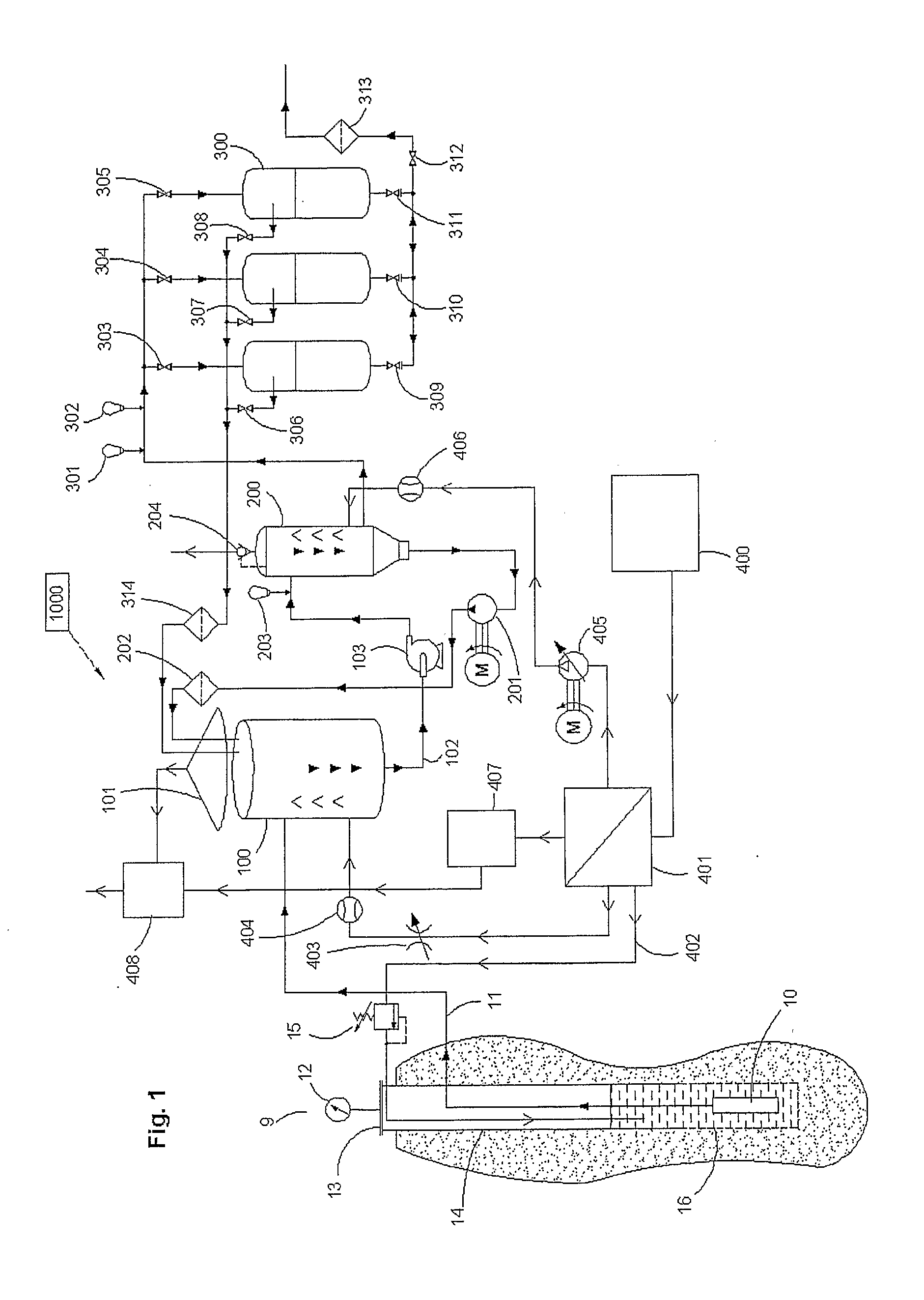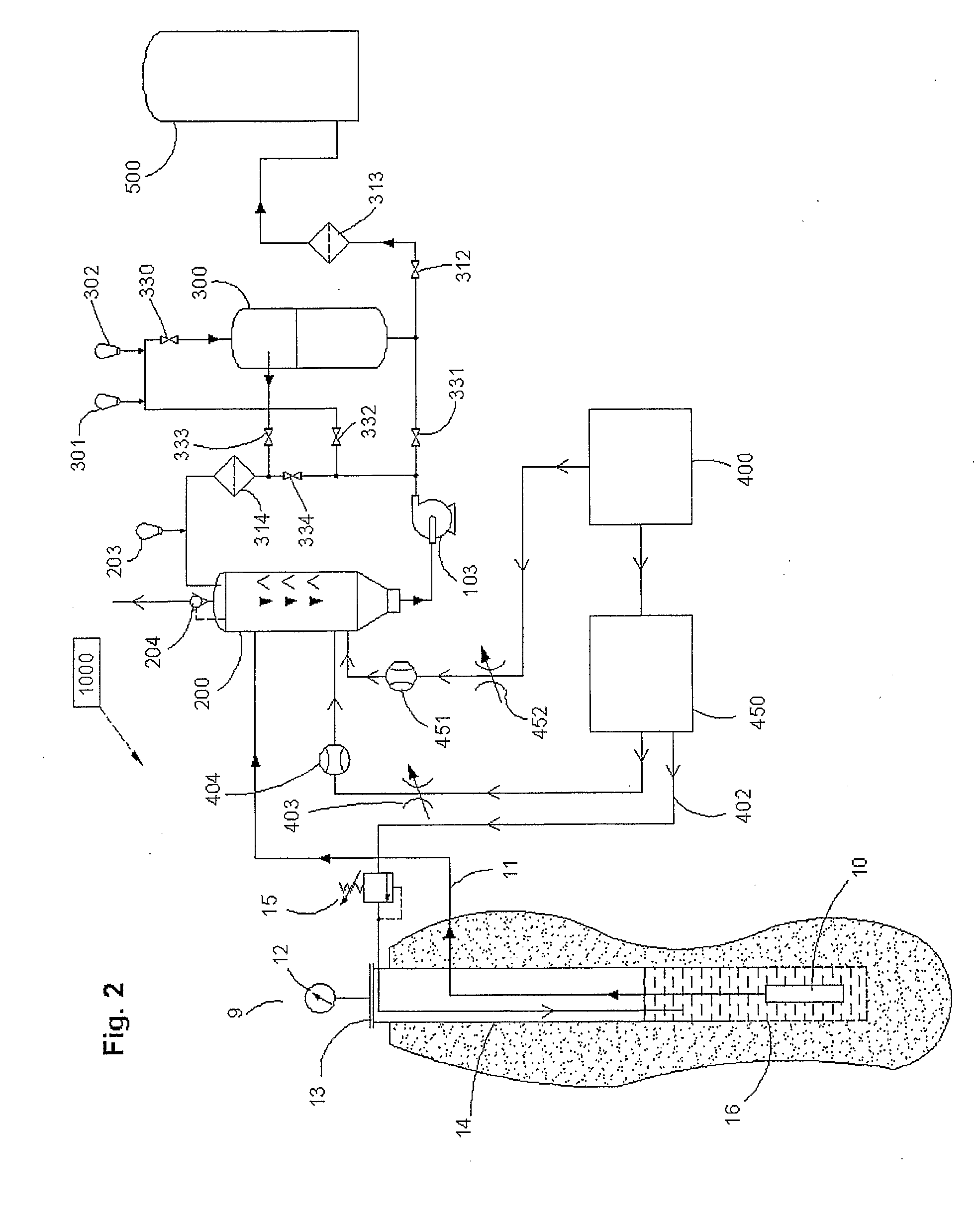Method for ground water and wastewater treatment
a ground water and wastewater treatment technology, applied in water/sludge/sewage treatment, inorganic chemistry, dispersed particle filtration, etc., can solve the problems of large volume of untreated water, significant water loss, environmental threat, etc., and achieve good stripping properties and reduce the water level in the well.
- Summary
- Abstract
- Description
- Claims
- Application Information
AI Technical Summary
Benefits of technology
Problems solved by technology
Method used
Image
Examples
Embodiment Construction
[0036]The key components of a water treatment system made in accordance with the present invention are the degassing unit using an inert gas such as nitrogen to perform degassing and flotation without oxidation, the pre-catalytic oxidation reactor reducing the oxygen demand for the catalytic stage and reducing the variation in concentration of oxygen demanding compounds, the catalytic oxidation filters, the gas preparation and injection system, and the supervisory control system. It is the inert gas degassing and inert atmosphere protection of the well and their combination with oxidation in progressive steps more effectively using the oxidants that represent a significant departure from conventional design. It is understood that all embodiments of the present invention described herein could be integrated in broader water treatment system that may vary depending on the final usage or application of product treatment of water.
[0037]In FIG. 1, is shown a water well 9 which has a casi...
PUM
| Property | Measurement | Unit |
|---|---|---|
| Pressure | aaaaa | aaaaa |
| Concentration | aaaaa | aaaaa |
| Content | aaaaa | aaaaa |
Abstract
Description
Claims
Application Information
 Login to View More
Login to View More - R&D
- Intellectual Property
- Life Sciences
- Materials
- Tech Scout
- Unparalleled Data Quality
- Higher Quality Content
- 60% Fewer Hallucinations
Browse by: Latest US Patents, China's latest patents, Technical Efficacy Thesaurus, Application Domain, Technology Topic, Popular Technical Reports.
© 2025 PatSnap. All rights reserved.Legal|Privacy policy|Modern Slavery Act Transparency Statement|Sitemap|About US| Contact US: help@patsnap.com



